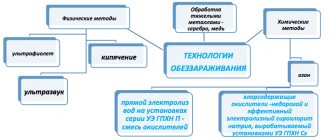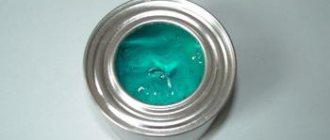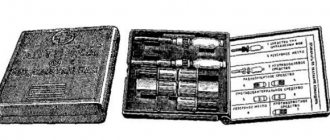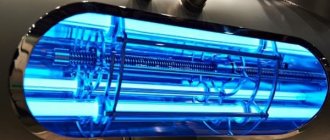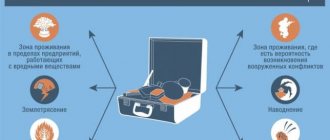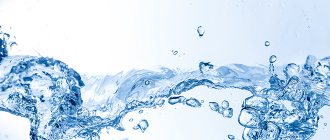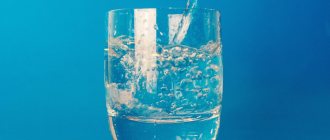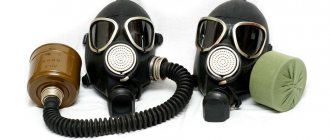What are water purification tablets?
Untreated and unclean water carries several diseases and illnesses. They range from harmless diarrhea to infection with various deadly viruses, pathogens, protozoa and the like.
However, thanks to modern technology, there are now many ways to purify water. These methods include desalination, osmosis, distillation and UV purification, commonly used in households or businesses. Of course, while they can be effective, they are not exactly portable due to their bulk and girth.
This is where water purification tablets, such as well water purification tablets, come into the picture. Like the systems mentioned above, these tablets are designed to filter and purify water as it contains chemicals that kill various contaminants and viruses. However, since they are in tablet form, they are quite portable and easy to carry.
You just need to drop the tablet into a certain volume of water and you will get safe and drinkable water.
Because of this, water purification tablets are mainly used by tourists and vacationers. Water purification tablets provide a quick and easy solution to water problems.
Moreover, these tablets are also very convenient to have during emergencies. Places affected by floods, hurricanes, droughts and the like tend to have difficulty accessing clean water. With water purification tablet, people can easily use them to survive.
How to use, principle of operation ↑
These tablets are easy to use. Theoretically, you will need to add the required amount of the drug to a container of water, wait according to the instructions for a certain period of time (on average from 15 to 30 minutes) and you can drink the water.
Professionals and specialists recommend doing things a little differently and spending a little more time on this process:
- firstly, water collected from a river, lake or pond should be filtered through cloth or sand. At this stage, all large particles and contaminants will be removed from the liquid;
Photo: filter water through cloth or sand
- Next, we neutralize the water using the available tablets. We wait the allotted time;
Photo: waiting the allotted time
- Some drugs work on the principle of binding harmful particles in water. Because of this, a sediment appears in the liquid, which is recommended to be carefully removed. This can be done using a fabric filter, using activated carbon, or pouring clean water into another container;
Photo: pour clean water into another container
- All drugs are chemical and have a harmful effect on the body. Some pills, according to scientists, are more harmful, others less, but none of them are unconditionally useful. Therefore, it is recommended to boil the resulting water.
Photo: boil the resulting water
Important! It is not advisable to abuse such drugs and use them only when absolutely necessary.
For young children, in parallel with these tablets, doctors recommend giving vitamins for normal intestinal function. You can use multivitamins, but vitamin C and ascorbic acid are sufficient.
The principle of action of such drugs is to break down harmful substances in cells. The active component of the tablet enters into a chemical reaction with certain bacteria and completely destroys them.
It is because of this interaction that in some cases a sediment appears in the water container, which cannot be consumed.
Water purification tablets have many advantages over other personal protective equipment.
Firstly , the tablets are light in weight and do not take up much space.
Secondly , it will take a small amount of time to disinfect the water as much as possible.
Thirdly , the tablets do not require the purchase or use of other devices for water purification. They are self-sufficient.
Fourthly , when tablets interact with water, unnecessary chemical compounds and foreign, unpleasant odors are not formed in the latter.
How do water purification tablets work?
These water purification tablets work by dissolving the active ingredient in water, which in turn kills numerous disease-causing pollutants and viruses. Some of these viruses and contaminants include, but are not limited to: Giardia, E. coli, Cryptosporidium, Shigella, Salmonella and the like. They can also improve the taste of water.
To get their benefits, you simply need to place the tablet in a certain volume of water, as indicated in the instructions for the tablet. Once they are dissolved, you will need to shake the container for 10-15 minutes before allowing the water to settle. This ensures that all the ingredients and chemicals in your tablet can be distributed evenly into your water.
Most water purification tablets work in 30 minutes, while some may take longer, such as four hours or more. Make sure you read the instructions and labels included in the box carefully.
It is recommended that before adding the tablets to the water, you remove any large particles of debris that you see. Once you do this, you will find that the pills work more effectively.
You should keep the lid of your container slightly open. This way, when you shake it, some of the liquid can get into the opening of the container and the lid, which will also cleanse it of germs and bacteria.
Disinfecting water with special tablets
Aquasept tablets are a mixture of monosodium salt of dichloroisocyanuric acid with various technological additives. The tablet dissolves within 10-15 minutes. and releases 4 mg of active chlorine, which ensures disinfection of 700-800 ml of water provided it comes into contact with the drug for 30 minutes . Today, to disinfect individual water supplies, the tableted preparation “Aquatabs” , one tablet of which contains 3.5 mg of active chlorine, sufficient to disinfect one flask of water.
The disinfecting effect of Aquasept is reduced when treating water with increased turbidity and color. In addition, the drug is not very effective against viruses.
Neoaquasept tablets are a mixture of monosodium salt of dichloroisocyanuric acid (38%), adipic acid (22%), sodium bicarbonate (39.5%) and calcium stearate (0.5%). The content of active chlorine reaches 10-12%. It has good solubility in water (2 minutes at a temperature of 20 °C), has sufficient antimicrobial activity and is intended for the disinfection of relatively clean water with low color and turbidity.
The drug also has a long-term effect and can be used for preservation (up to 2 days).
Aquasan tablets contain dichloroisocyanuric acid salt, a coagulant and other components. Due to the use of a flocculant in the Aquasan tablet, the color and turbidity of water is reduced, and partial purification of petroleum products and a number of heavy metals occurs.
Possessing good flocculating properties, this preparation provides flocculation without adjusting the pH of the treated water. Purification and clarification of water is achieved within 10-15 minutes, regardless of temperature . In the warm season, it disinfects water in 20 minutes , in the cold season – in 60 minutes.
Of the preparations for individual water disinfection, the most common are organic chloramines, for example “Pantocid” , which is widely used not only in the former Soviet Union, but also in England and the USA under the name “Galazona”. In "pantocide" the active ingredient is 0.0082 g of benzoic acid paradichlorosulfamide (about 3 mg of active chlorine). The tablet is designed to disinfect water in one flask ( 750 ml ) with an exposure time of at least 40 minutes .
The main disadvantages of this drug are its slow solubility and insufficient activity in case of significant organic contamination of water.
After disinfection with these preparations, water has a chlorine odor with an intensity of up to 3-4 points; in field conditions it cannot be considered a contraindication to its use and is an indicator of a sufficient bactericidal effect .
Types of water purification tablets
Water sterilization tablets mainly differ in the ingredient used to purify the water. These are currently the most common types available in the market.
Iodine
Iodine water tablets are known to effectively kill several common viruses, pathogens, and bacteria.
After dissolving the water purification tablets in the water, let the solution sit for at least 30 minutes. Temperature and water quality also play a role in the effectiveness of the cleaning process. Be sure to get rid of all the particles in your water, and cold water is harder to clean than warm water.
Iodine water tablets have a shelf life of 6-7 years. However, these tablets may cause a peculiar metallic taste in your water.
Chlorine
Chlorine water tablets work by destroying the microorganism from the inside. Thus, it is a very effective solution against common viruses and bacteria. They also have a long shelf life of 5 years.
For common bacteria, let the solution sit for at least 30 minutes. If you are dealing with giardia and similar pathogens, let the water purification tablets sit for at least 45 minutes.
On the other hand, water purification bleach tablets tend to produce a bleaching odor in your container. Luckily, you can mitigate this by keeping the container open to allow air to flow through.
Chlorine dioxide
Of these three tablets, chlorine dioxide is the most effective on the market as it can kill a wide range of bacteria and viruses. They also have fewer side effects compared to these two.
These tablets rely on oxidation, where the ingredient penetrates the bacterial membrane and is destroyed from the inside. They are so strong that they can even penetrate Giardia and Cryptosporidium cells.
If stored safely, these tablets can last up to 4 years. On the other hand, chlorine dioxide tablets tend to be more expensive.
Tablets for water disinfection Surv WaterTabs 20 l packaging
Surv WaterTabs are tablets for water disinfection. They will help disinfect natural water (for example, from a river, lake or puddle) until it is safe for drinking and cooking.
They make water from unexplored sources bacteriologically suitable for consumption, protect against pathogens, bacteria and viruses.
Areas of use:
Surv WaterTabs will come in handy during trips, business trips and outings. They will be useful during tourism, hunting or fishing, when there is a need to use water from natural sources.
Also, Surv disinfection tablets will help travelers, athletes of active recreation in the wild, or people going on vacation where there is a risk of encountering unknown quality of drinking water.
Purpose:
Surv WaterTabs are designed to disinfect water from microorganisms, bacteria and viruses to a safe state for consumption. For rough cleaning of debris, dirt, sand, silt, etc., before disinfection, it is necessary to purify the water using a filter or strain through gauze, paper prefilter, coarse fabric or other filter material.
Dosage:
To disinfect water that does not require serious purification (tap, well, artesian) that contains bacteria and viruses, it is recommended to use tablets at the rate of 1 tablet per 1 liter of water.
To disinfect contaminated or potentially hazardous water (river, lake, pond, etc.), it is necessary to use tablets at the rate of 3-4 tablets per 1 liter of water.
Instructions for use:
To disinfect, find a liter container with a screw-on lid.
- Pour 1 liter of water, add 1 (or more) tablet. Wait until it dissolves.
- Close the lid. Shake. Open the lid a little (a quarter turn), turn the container upside down so that a little water flows out and wets the lid (to disinfect it).
- Turn the container back over and wait. The time required for disinfection is 30 minutes. After this, the water is suitable for drinking.
Water that does not require purification and has been treated with 1 tablet per 1 liter is allowed for consumption for no more than 30 days. Water purified to a degree of 10 mg of chlorine per 1 liter (i.e. 5 tablets of 2 mg each) must be filtered through activated carbon or boiled for 1 minute before use.
Security measures:
When using SurvTabs to disinfect cloudy and highly colored water, it must be pre-filtered through a filter.
When collecting water from unexplored sources and potentially dangerous places (for example, reservoirs near landfills, cemeteries, slaughter sites, wild dirty reservoirs in the wild, etc.), an increased dose of tablets per liter is recommended.
To remove excess chlorine after purification, it is recommended to filter disinfected water through activated carbon, other sorbents, or boil it for 1 minute.
Impact:
Has antimicrobial activity against: gram-negative and gram-positive bacteria (including mycobacterium tuberculosis, causative agents of especially dangerous infections, including bacillus spores); viruses (Coxsackie, ECHO, polio, enteral and parenteral hepatitis, rotavirus, norovirus, HIV, influenza type A, including A H5N1, A H1N1, adenoviruses and other pathogens of ARVI, herpes, cytomegaly); mushrooms of the genus Candida; dermatophytes; mold fungi, etc. ,
Compliance with standards : Manufactured in accordance with TU No9392-028-53757476-2015 dated July 1, 2015. Certified by SGR No.RU.77.99.57.002.E.008849.09.15 dated 09/07/2015. The Declaration of Conformity was issued by the Federal Budgetary Institution “Research Institute of Disinfectology of Rospotrebnadzor” dated September 11, 2015.
Best before date:
The shelf life is 5 years (in unopened manufacturer's packaging). The batch date is indicated on the blister of tablets. The shelf life of ready-made solutions is 5 days.
Storage conditions:
From -30 to +30 degrees in a well-ventilated room.
Characteristics:
- One blister contains 10 tablets. The package contains 2 blisters.
- Recommended dose for normal water: 1 tablet per 1 liter
- Recommended dose for potentially hazardous water: 3-4 tablets per 1 liter
- Method of purification: settling.
- Cleansing time: 30 minutes.
- Production: Russia
- Active ingredient: sodium salt of dichloroisocyanuric acid (С3ОзНзСl2Nа).
- Main effect: chlorine molecules kill viruses and bacteria, disinfecting water
How to choose the best water purification tablets?
Ingredients
As mentioned above, water purification tablets come in different types and forms. The most common types are iodine, chlorine and chlorine dioxide.
Which type you get will depend on the strength you need. In terms of effectiveness, chlorine dioxide tablet is the most powerful as it can eradicate a wide range of pathogens, viruses, bacteria and other microorganisms. Moreover, water purification tabs also produce the least side effects compared to the different two types.
However, if you are just looking for a quick fix, iodine and chlorine are sufficient.
Time to cleanse
Of course, you want a water purification tablet that purifies your water quickly.
Most tablets on the market need at least 30 minutes. It is best if you buy this type as it is the fastest, allowing you to have clean water faster.
Package
It's more about the user's taste and preferences. Some water purification tablets come in a bottle and some come in separate packages.
Most users tend to go for bottle options as they are easier to carry and use. However, it ultimately depends on the preference and choice of the user.
Modern methods of water disinfection
Purity of water is the key to good health, but what method of purification should you choose so that it does not lose its taste and usefulness. The choice of the optimal option depends on the location of water supply and the initial indicators of laboratory testing.
Chemical methods
When the liquid from the tap acquires the smell of chlorine, it becomes clear: disinfection is in progress. This is a prime example
Chemical methods
the use of chemical treatments to eliminate pathogenic infections.
The essence of the methods is the penetration of chemicals through the protective shell of the bacterium and further inactivation of the cell.
To disinfect water, bleach, ozone, sodium hypochlorite, chlorine dioxide and others are used. The products help purify H2O for drinking and wastewater, but after their use it is recommended to use filters to remove chemical residues.
The most effective methods are chlorination and ozonation.
Chlorination
Under the influence of the reagent, simultaneous oxidation and neutralization of infections occur. The following are used as cleaners:
- sodium hypochlorite;
- calcium hypochlorite;
- chlorine gas obtained from liquid Cl or by electrolysis.
Bleach is used to treat swimming pool equipment.
The advantage of chlorine derivatives over others is their preservative effect.
The disadvantage is the formation of by-products - chloroform and trihalomethane, which have a carcinogenic effect.
Attention! When boiled in chlorinated H2O, dioxin is formed. This is a toxin that suppresses the immune system, causing the development of cancer and disruption of the endocrine system, and fetal malformations during pregnancy. 90% of dioxins enter the body through water and food. They are deposited in absolutely all cells of the body, causing its general weakening. This condition is called “chemical AIDS.”
Since H2O disinfection for household use uses chlorine, to avoid health problems, it is recommended to use filter systems that can capture not only pathogenic organisms, but also potentially harmful substances.
An alternative to using pure chlorine is to use NaClO (sodium hypochlorite). I obtain it by electrolysis of a solution of table salt or mineral water saturated with chloride ions (from 50 mg/l). The effectiveness of using hypochlorite is no lower than that of liquid Cl, however, this method does not eliminate the formation of trihalomethane and increases the salt content.
Ozonation
Ozone cleaning is carried out after mechanical cleaning. The liquid comes into contact with O3, which arises as a result of the action of an electric field on O2. The exposure time to ozone for disinfection is up to 15 minutes.
Ozonizing filters operate at a water pressure of 2-6 atmospheres and are capable of purifying up to 10 liters of liquid/min.
The design consists of components: power supplies, automation, ozone sorption; injector; flasks with cartridges for additional cleaning.
Disinfection by ozone has a number of advantages compared to chlorination:
- H2O is enriched with oxygen;
- pH remains at the same level;
- the liquid becomes ready for use, but does not pose a threat;
- bacteria are destroyed in a matter of minutes.
The method also has disadvantages:
- high toxicity of ozone, which requires careful control of the disinfection process;
- high cost of the device;
- ozonated water causes metal corrosion, so it is necessary to use polyethylene pipes, concrete structures, and stainless steel appliances;
- lack of prolonged antibacterial action;
- creating favorable conditions for the re-development of microorganisms.
For industrial purposes, it is advisable to use combined methods using chlorine.
Ozonizing water disinfection units for domestic use are effective, help improve its taste, smell, color, but have a high cost - about 20 thousand rubles.
Physical methods
Methods for removing infectious agents without the use of reagents are called physical. Among them are ultraviolet and ultrasound treatment.
Ultraviolet cleaners
The method is based on the harmful effects of ultraviolet radiation on the metabolic systems of pathogenic microorganisms, the cytoplasm of cells, and the structure of proteins.
The duration of exposure to ultraviolet radiation is not limited. Long-term irradiation can achieve the maximum positive effect. The optimal wavelength is 260 nm.
A significant drawback is the lack of a prolonged effect.
To destroy the hepatitis C virus, it is enough to expose it to ultraviolet light for a few seconds.
The cost of a disinfection lamp ranges from 4 to 30 thousand rubles. depending on the performance of the model, purity (99-99.9%).
Exposure to ultrasound
The installation is an ultrasound generator. When it is turned on, cavitation occurs - the formation of bubbles, which subsequently burst. As a result of such a “micro-explosion,” a pressure drop occurs and the cell membrane of the microorganism bursts. All viruses and bacteria die.
Ultrasonic installations have found application in industry (the Lazur bactericidal installation for water disinfection), when it is necessary to treat water storage tanks (the Well device), and to eliminate infections in H2O at home (the Vodoprovod device).
To purchase a household ultrasonic unit you will have to spend about 5 thousand rubles.
Boiling
This is the simplest method of disinfection, but, alas, not the most effective.
Attention! Boiling does not always help eliminate the threat of infectious infection. For example, to destroy the hepatitis A virus, water will have to be boiled for 4 minutes, virus B for 1 hour with the addition of soda or 5 minutes in an autoclave, virus C for 2 minutes. In everyday life, H2O is considered boiled when the first “bubbles” appear, but it remains unsafe.
The duration of boiling should be at least 5-10 minutes. In this case, the liquid will become softer due to the deposition of hard salts on the walls of the vessel, but the taste qualities will not change for the better.
Mixed methods
You can combine cleaning methods as you like. The greatest efficiency is observed with the sequential use of chlorination with UV filtration and ozonation.
The best water purification tablets
AquaClean drinking water purification tablets
Water purification tablets remain one of the easiest and most convenient water purification systems available, and this convenient pack comes with a bottle of 50 germicidal tablets, as well as a bottle of 50 PA+ tablets - treating a total of 25 liters of water. Within 35 minutes, the tablets get rid of bacteria and lamblia in the water. The PA+ tablets are an important bonus for neutralizing the color and taste of the iodine in the purification tablets, meaning your water will actually taste good to drink. They are also trusted by military and emergency crews.
Best Fast Acting Tablets Aquatabs AQT100
These handy packets of water purification tablets have been helping adventurers for over 20 years - and are an invaluable aid to organizations like NATO in emergency situations when potable water is no longer guaranteed. Effervescent tablets dissolve in water to kill microorganisms that cause typhoid fever, dysentery and cholera. They are also among the fastest acting, with a cleanup time of only 30 minutes. Just remember to filter the water first!
Best Value for Money: Katadyn Micropur MP1 Tablets
Although this is a relatively expensive water purification system, there are many benefits that justify its cost. First, these tablets are individually packaged—if you only use one or a few at a time, or need to share them, the rest remain sealed and safe. The brand has been in the water systems business since 1928, and they are effective against viruses, bacteria, giardia and cryptosporidium in all water conditions.
Best Shelf Life: Aquatabs Mightie Company Water Purification Tablets
If you need to buy tablets in bulk for an expedition or group trip, these water purification tablets are one of the most popular options, with over 1 billion sold every year. They are the only water purification tablet with NSF 60 certification and, most importantly, an approved formula for routine use by the World Health Organization, meaning they can be used in households that do not have safe access to potable water. The tablets also have a five-year shelf life, so unless you use them all on your first hike, they'll last a long time.
Water purification tablets Crystalpool Long
These cleansing tablets are among the most thorough and in addition to the “big four” bacteria, Giardia, and viruses, they also treat cryptosporidium. And although they cost a little more, getting rid of the parasite may well be worth it. Their effectiveness also meets microbiological water purifier testing standards. The only downside is that they last for four hours.
ChlorExel water purification tablets
With one tablet capable of treating up to five liters of water, it's a great choice if you just want to split up a large batch of purified water and share it with a group. Cleaning will only take 30 minutes. The tablets are supplied in a case that is made of four layers of safety heat-sealed mylar with a closing zipper. They're also sunproof and waterproof, so you don't have to worry about the elements interfering with the tablets' shelf life. Sometimes there is a slight chlorine smell left in the purified water, but the ease of use can be worth it.
EF Chlor water purification tablets
If you like to be super-prepared for any survival situation and want to keep your family safe in the face of a natural disaster or other emergency, then mass-marketed cleansing tablets may be what you need. These are chlorine tablets that destroy all bacteria and all known viruses. The WHO-approved tablets also contain an effervescent additive that reduces the taste of chlorine.
The need for water disinfection
The water resource passes through the rocks, enriching itself with various components, not all of which are useful. Heavy metals lie at great depths, and if the source lies in the upper layers, the composition will contain a lot of organic matter. The purified liquid from the tap may contain harmful substances, bacteria and viruses. This is due to the fact that in many cities, equipment for wastewater treatment plants was installed back in Soviet times. Fortunately, it is now easy to choose how and with what to disinfect water intended for drinking, since the modern market offers many options, including methods that can be used at home.
Even if new installations have recently been installed at the station, this does not mean that there is nothing to worry about. Before water gets into the apartment, it will travel several kilometers through pipelines. The pipes are most likely covered with a rusty coating, and they may also contain pathogenic flora. Even an initially purified liquid has time to react with this environment and absorb rust and heavy metal salts.
As a result, organochlorine compounds are formed, which are undesirable for humans to consume. And boiling can release toxins that are hazardous to health. In order not to fear for your health, you can order specialized equipment for disinfection in. Employees will select drinking water disinfection systems necessary not only to eliminate unpleasant odor and color, but also to maintain health.
Do water purification tablets kill viruses?
There is a growing body of knowledge showing the effectiveness of water purification tablets in killing viruses. However, the exact mechanism of virucidal activity remains unclear. Microbiologists suggest that water purification tablets may affect the protein structure of viruses.
Changing viral proteins can prevent certain viral strains from entering cells and changing the cell's genetic material. In some ways, these chemicals do not directly kill viruses. They only deprive these microorganisms of the ability to penetrate host cells. It's also worth noting that different compounds may have different effects on infections.
How many water purification tablets do I need?
It all depends on the specific formulation of the tablets. This is the main reason why you should always pay attention to the directions for use printed on the packaging of these products.
The general recommendation is to dissolve a certain number of water purification tablets in the recommended volume of pre-filtered water. For example, a product may require one water purification tablet for every liter of water. If you are going to purify 2 liters, then you will need two water purification tablets.
The ratio of water purification tablets to the volume of water depends on the active substance. For example, a 1:100 solution of chlorine in water is ideal in emergency situations requiring disinfection of drinking water. On the other hand, using a 2% iodine tincture will require five drops of iodine tincture for every liter of water.
It is also necessary to consider the length of time for water purification. Some products require at least 4 hours for the water purification tablet to “purify” drinking water. Other brands only require a 30 to 45 minute wait. This may affect the total number of water purification tablets you need to prepare for the entire day.
Aquatabs
"AQUATABS" (tablets)
made in Ireland
The Aquatabs disinfectant has undergone full-scale testing and is used in many countries around the world. Registered in Russia in 1996 and since then has been widely used for the disinfection of water and other objects.
Purpose:
Aquatabs tablets are intended for the disinfection of drinking water with non-centralized water supply, water storage tanks, for disinfection in swimming pools (water, objects in the pool baths, locker rooms, showers, toilets, sanitary equipment, cleaning material), as well as for the disinfection of fruits , vegetables and water for making edible ice.
To disinfect cloudy and highly colored water, it is recommended to pre-filtrate it through a fine-fabric filter
Application area:
Infectious foci, enterprises and organizations whose activities are related to the provision of drinking water to the population with a non-centralized water supply, catering, recreation and sports enterprises (swimming pools), the population at home (especially hunters, fishermen, tourists).
Types of Aquatabs tablets supplied to Russia Table
| № | Name AQUATABS | Type of packaging and number of tablets | DHCC content, mg | Amount of active chlorine in tablet, mg |
| 1 | 3.5 mg | Blister 10 tablets. | 3,5 | 2,0 |
| 2 | 17 mg | Blister 10 tablets | 17,0 | 10,0 |
| 3 | 500 mg | Jar 1000 tab. Blister 6 tablets. | 500,0 | 300,0 |
| 4 | 1.67 g | Can 320 | 1670,0 | 1000,0 |
| 5 | 8.68 g | Jar 60 tab. | 8680,0 | 5000,0 |
The shelf life of the product in blisters is 5 years, in plastic jars – 3 years.
The rules for using tablets are set out in:
- Instructions No. 2/1 dated 07/06/2007 on the use of the disinfectant “Aquatabs” (tablets) from Medentek Ltd. (Ireland)
- Instructions No. 2/2 dated 07/06/2007 for the disinfection of individual drinking water supplies with the disinfectant “AQUATABS” (tablets) (Ireland)
When the drug is dissolved in water, active chlorine is released, which has fungicidal, virucidal and bactericidal properties. When treating highly colored and turbid waters, their preliminary filtration (through a fine cloth) is necessary. Half an hour after the disintegration of the water disinfection tablet, the concentration of residual free chlorine is 1.4-1.6 mg/l.
It is best to disinfect water from a well and other sources in a container with a screw cap. After dissolving the tablet, you need to shake the vessel and also moisten its neck with the solution. The liquid is suitable for drinking after 30 minutes, but it is better to additionally filter it with activated carbon or boil it for 1 minute (to remove excess chlorine).
How long do water purification tablets last?
There is no standard expiration date for water purification tablets. Some of them can remain effective for 5 years from the date of manufacture of the product. Some products may have a shorter shelf life of 2 to 3 years or a longer shelf life of 6 to 8 years. The shelf life of water purification tablets usually depends on the additional ingredients used in the formulation. The quality of manufacturing processes can also have an impact on the overall shelf life of the tablets.
Water purification tablets are supplied in sealed packages. It is important to open only the number of tablets that you intend to use to purify a certain volume of water. Storing these tablets in a dry and cool place and away from extreme temperatures is very important. This helps ensure the shelf life of the product.
